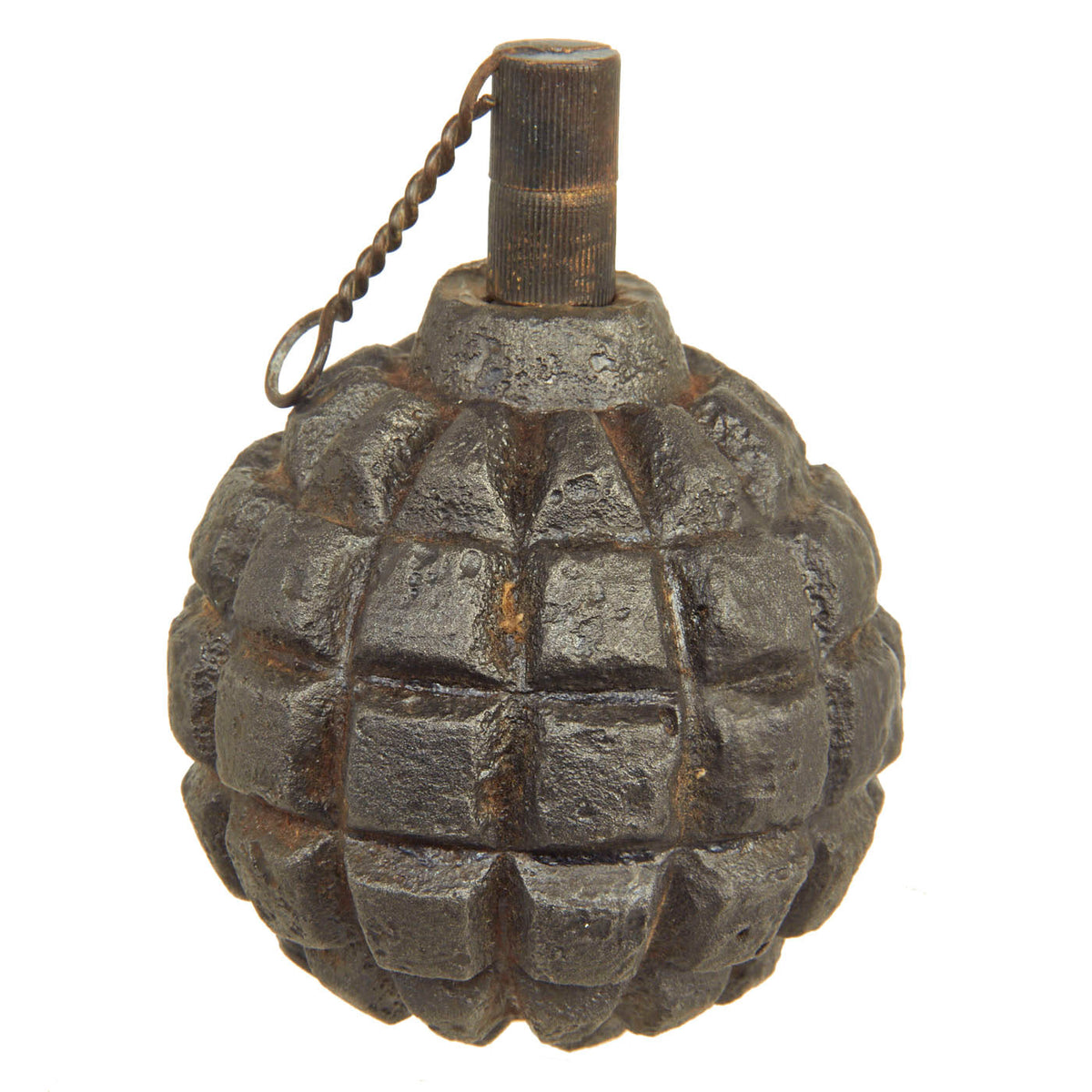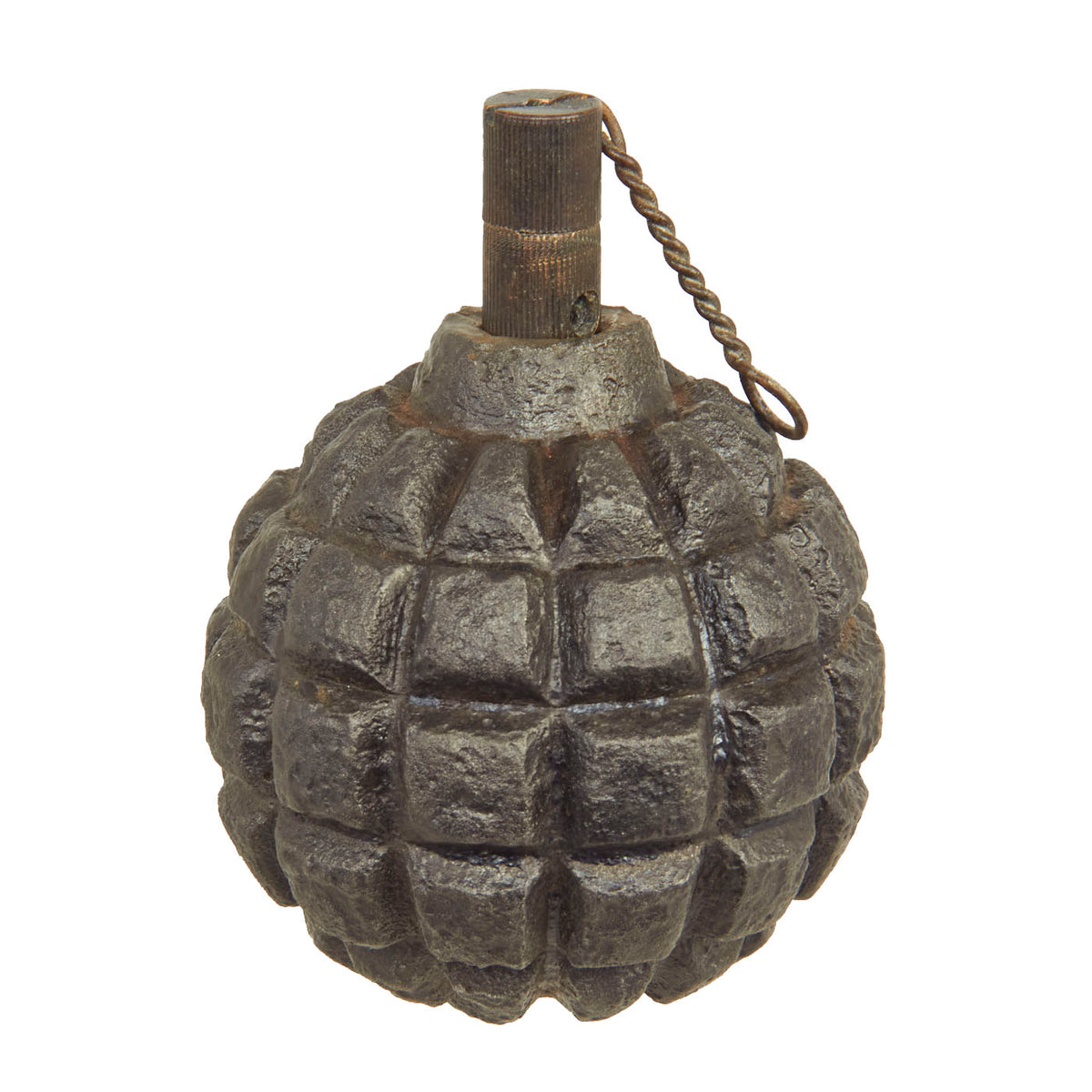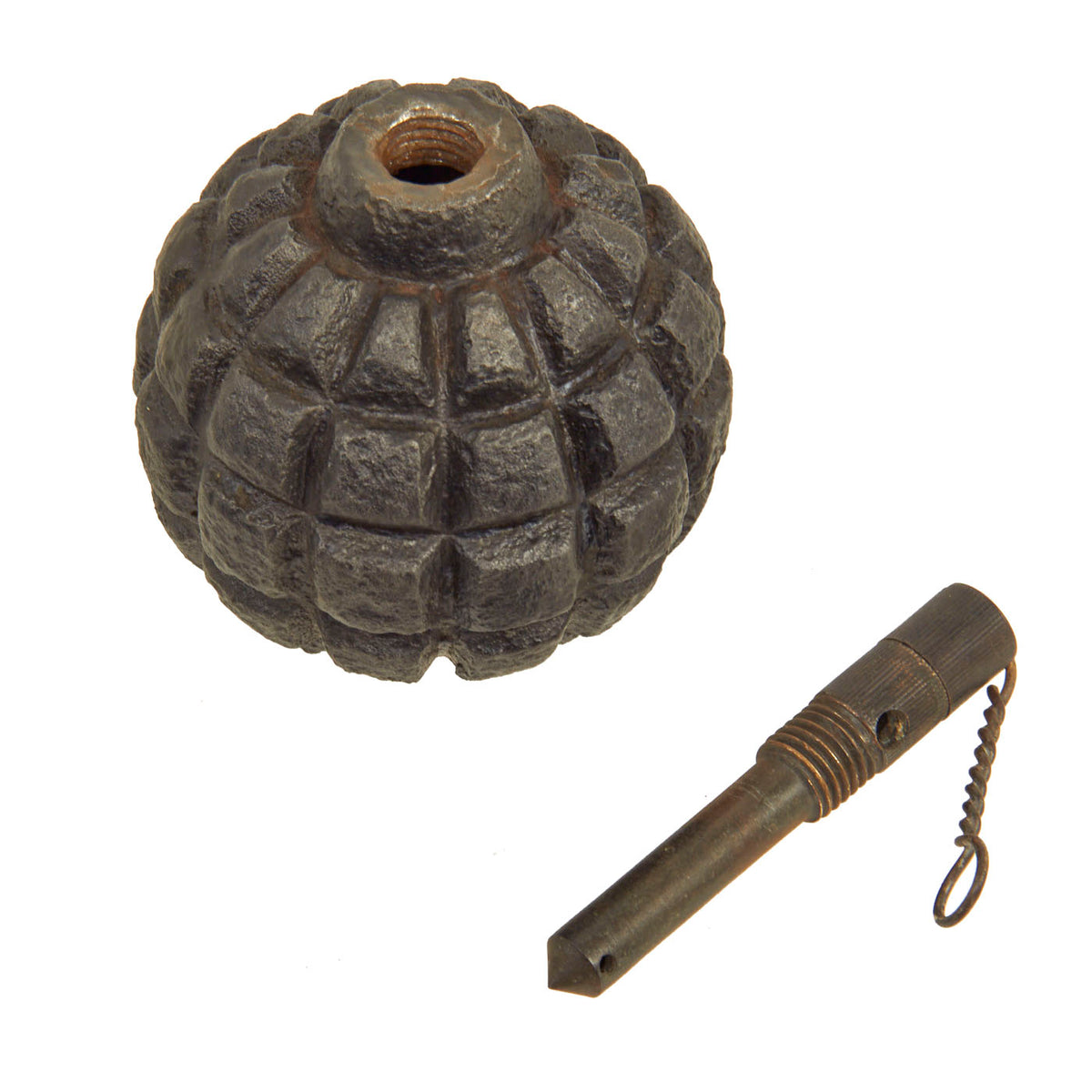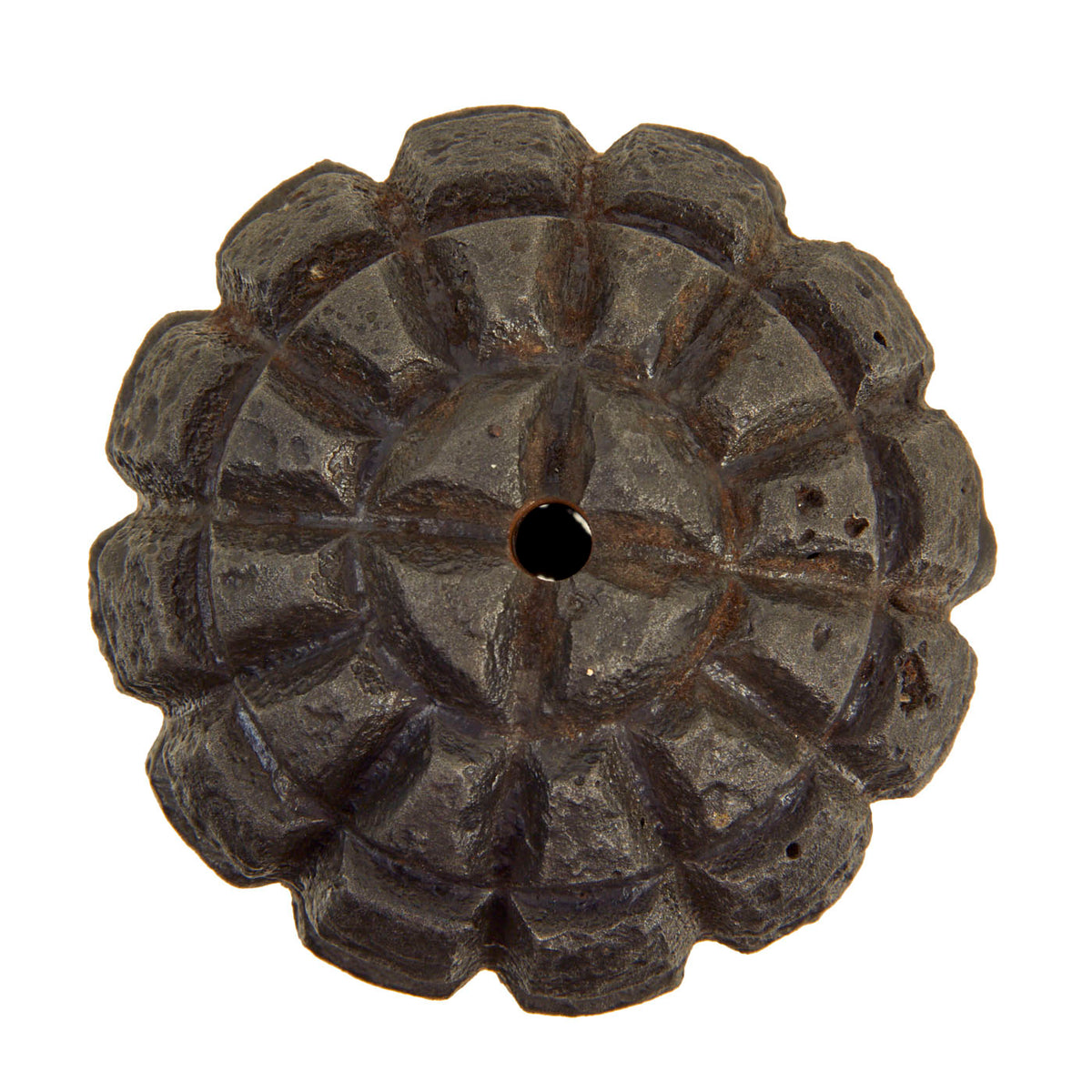Original German WWI Model 1913 Kugel Hand Fragmentation Grenade – Kugelhandgranate – Inert Original Items
$ 450,00 $ 135,00
Original Item: Only One Available. The Kugelhandgranate (“ball hand grenade”) is the name given to several models of hand thrown fragmentation grenades manufactured in WWI Germany. This example is known as the Model 1913, which differs from the later version in that it has more fragmentation sections unlike the more simplified 1915 model. As they were not made in any large quantities, German Ball Grenades are rare in any condition. This example is quite nice, with a lot of the original lacquer intact, and an original deactivated friction-ignited fuze, complete with the pull wire. The zinc M1915 traction fuze assembly still screws out, with the detonator stalk showing some corrosion. Highly desirable, and sure to be the centerpiece of any grenade collection!
This example is completely inert and is unable to be rendered live again to be used as a destructive device. This is in total compliance with the current BATF standards on ordnance.
Not Available For Export
Germany entered World War I with this single grenade design: a heavy 750-gram (26 oz) ball-shaped fragmentation grenade for use only by pioneers in attacking fortifications. It was too heavy for regular use on the battlefield by untrained troops and not suitable for mass production. This left Germany without a standard-issue grenade and improvised designs similar to those of the British were used until a proper grenade could be supplied.
The body of the Kugelhandgranate was cast iron 8 mm thick, spherical shaped and externally segmented designed to produce between 70 and 80 fragments. A bronze-like stick (which was the igniter) was introduced to the spherical body. The filling was a mixture of black powder, barium nitrate, and potassium perchlorate, and did not require a detonator. The friction igniter consisted of a bronze body with a central chamber filled with black powder and supplied with a 5 or 7 second delay, the powder train was topped with a priming wire made of brass with a loop at one end and serrated on the other. The serrated portion was coated with a mixture of ground glass, manganese dioxide, and potassium chlorate.
To be used, the friction wire had to be pulled from the igniter, starting the delay train at the last possible moment. To do this, a piece of leather was attached to the igniter with a snap hook; pulling this removed the wire so the grenade could be thrown. A man with average strength could throw this grenade about 15 m, which made it completely ineffective for standard infantry uses, unless they were used on a slope where the grenade could roll. The only way to reach longer (up to 300 m) ranges was the use of mechanical spring based grenade launchers.
Fast Shipping with Professional Packaging
Thanks to our longstanding association with UPS FedEx DHL, and other major international carriers, we are able to provide a range of shipping options. Our warehouse staff is expertly trained and will wrap your products according to our exact and precise specifications. Prior to shipping, your goods will be thoroughly examined and securely secured. We ship to thousands clients each day across multiple countries. This shows how we're dedicated to be the largest retailer on the internet. Warehouses and distribution centres can be located throughout Europe as well as the USA.
Note: Orders with more than one item will be assigned a processing date depending on the item.
Before shipping before shipping, we'll conduct a thorough inspection of the items you have ordered. Today, the majority of orders will be delivered within 48 hours. The delivery time will be between 3-7 days.
Returns
The stock is dynamic and we cannot completely manage it because multiple stakeholders are involved, including our factory and warehouse. So the actual stock may alter at any time. It's possible that you may not receive your order once the order has been made.
Our policy is valid for a period of 30 days. If you don't receive the product within 30 days, we are not able to issue a refund or an exchange.
You can only return an item if it is unused and in the same state as the day you received it. You must have the item in its original packaging.
Related products
Uncategorized
Uncategorized
Uncategorized
Uncategorized
Uncategorized
Uncategorized
Uncategorized
Uncategorized
Uncategorized
Band of Brothers ORIGINAL GERMAN WWII Le. F.H. 18 10.5cm ARTILLERY PIECE Original Items
Uncategorized
Uncategorized
Uncategorized
Uncategorized
Uncategorized
Angolan Rebel 1970s era 60mm Inert Display Mortar from Angolan Civil War Original Items
Uncategorized
Uncategorized













































































